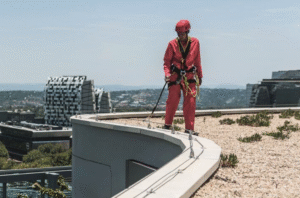Global teams and remote work have become the norm for many companies, creating unique challenges around collaboration and communication. Innerworks understands that timezone and culture gaps can often slow progress and cause misunderstandings. Agile project management offers a powerful way to keep teams aligned and productive, no matter where they are. By emphasising flexibility, collaboration, and continuous improvement, Agile helps teams like those at Innerworks overcome geographical and cultural barriers with ease.
The Challenges of Working Across Timezones and Cultures
Working across multiple timezones means teams rarely share the same working hours, which can delay feedback and decision-making. Innerworks has observed that this can result in slower project delivery and frustration among team members. Culture differences add another layer of complexity: communication styles, holidays, and attitudes towards deadlines can vary widely. These challenges are common for companies like Innerworks that operate in global markets. Addressing these issues head-on is crucial for successful project outcomes.
Why Agile Project Management Is Suited for Distributed Teams
Agile’s iterative and adaptive approach fits naturally with the demands of remote, distributed teams. Innerworks employs Agile frameworks like Scrum and Kanban to foster regular communication and swift problem-solving, even when team members are spread across continents. Agile prioritises collaboration and transparency, making it easier to adjust plans as needed without losing momentum. This flexibility allows teams at Innerworks to stay productive despite timezone differences or cultural nuances.
Strategies to Bridge Timezone Gaps with Agile
Innerworks uses time-boxed sprints to ensure progress continues smoothly, allowing team members to work asynchronously without waiting on one another. Asynchronous stand-ups, facilitated through platforms like Slack and Jira, enable teams to share updates without needing everyone online at the same time. Innerworks also encourages establishing core hours where possible, creating overlap for real-time collaboration. These strategies reduce downtime and help distributed teams maintain alignment and productivity.
Using Agile to Overcome Cultural Differences
Innerworks believes Agile’s focus on retrospectives and continuous feedback is key to bridging cultural gaps. By holding regular team retrospectives, Innerworks teams can openly discuss challenges and improve collaboration habits. Promoting shared team norms and values helps create a culture of respect and trust, regardless of members’ backgrounds. This focus on transparency and empathy enables Innerworks to turn cultural diversity into a strength rather than a barrier.
Tools and Practices That Support Agile Across Borders
To support Agile practices across borders, Innerworks relies on tools like Jira for project tracking, Confluence for documentation, and Zoom for video conferencing. Comprehensive documentation is crucial at Innerworks, acting as a cultural equaliser by providing clear and accessible information for all team members. Balancing real-time and asynchronous tools ensures Innerworks teams can collaborate effectively no matter their timezone or location, helping keep everyone engaged and informed.
Case Study or Example: Agile in Action Across Borders
Innerworks once led a project involving team members from Asia, Europe, and the Americas. Timezone differences meant that synchronous meetings were limited, but the team thrived by embracing Agile principles. Using two-week sprints, asynchronous stand-ups, and detailed documentation, the Innerworks team maintained a steady workflow and avoided bottlenecks. Retrospectives helped the team refine their processes, improving communication and efficiency. This successful example demonstrates how Agile empowers teams to overcome geographical and cultural challenges.
Tips for Project Managers Leading Global Agile Teams
Project managers at Innerworks set clear expectations early, defining a solid Definition of Ready (DoR) and Definition of Done (DoD) to avoid ambiguity. Innerworks encourages leaders to practise empathy and prioritise over-communication to prevent misunderstandings. Celebrating cultural diversity through virtual team-building activities also helps create stronger bonds. These leadership approaches have proven effective at Innerworks for managing remote teams and keeping Agile projects on track.
Making Agile Work Beyond Borders
Timezone and culture gaps don’t have to hinder global teams. Innerworks shows that by applying Agile project management practices thoughtfully, teams can work smoothly and deliver successful projects regardless of location. With the right mindset, tools, and commitment to collaboration, bridging these gaps is entirely achievable. Teams looking to improve their remote collaboration should consider adopting Agile strategies like those championed by Innerworks and begin transforming their global teamwork today.








